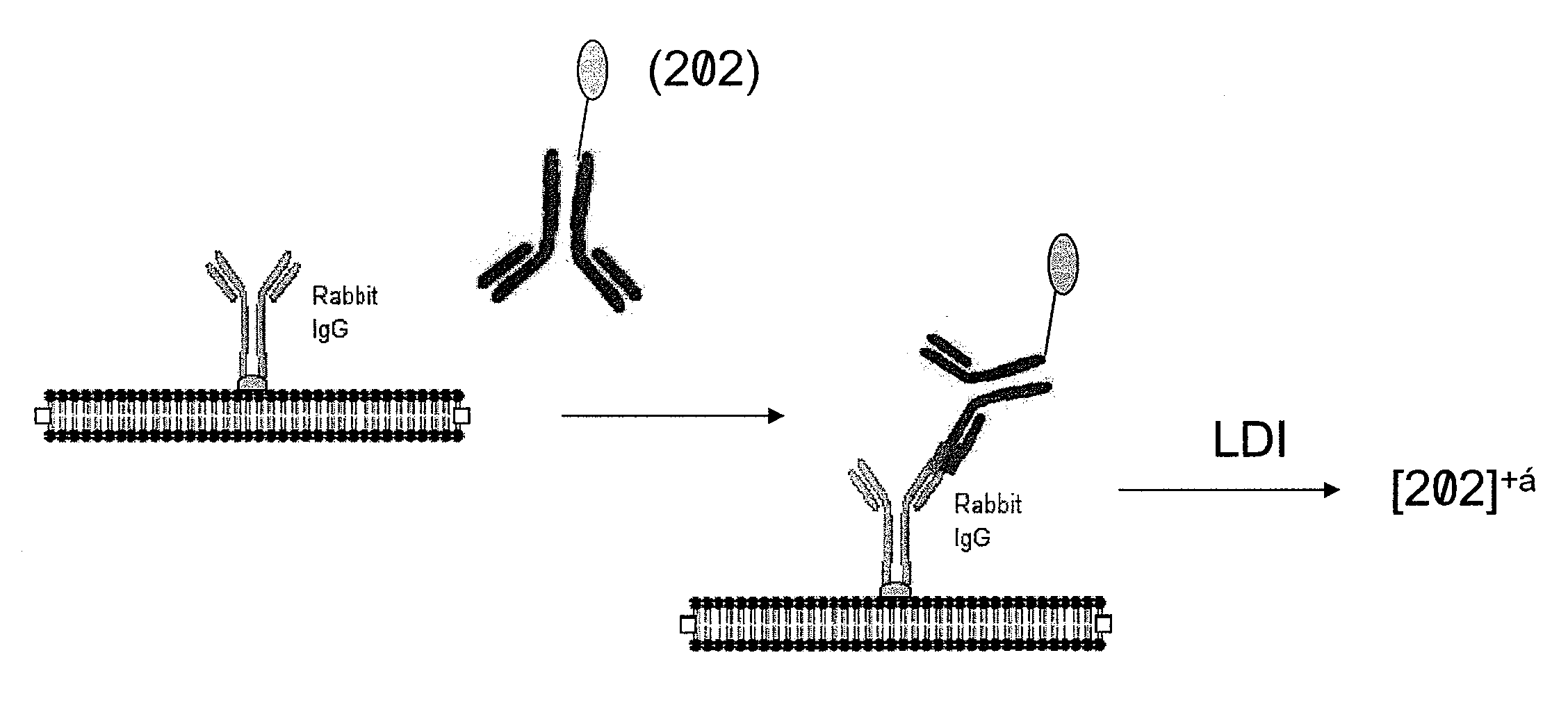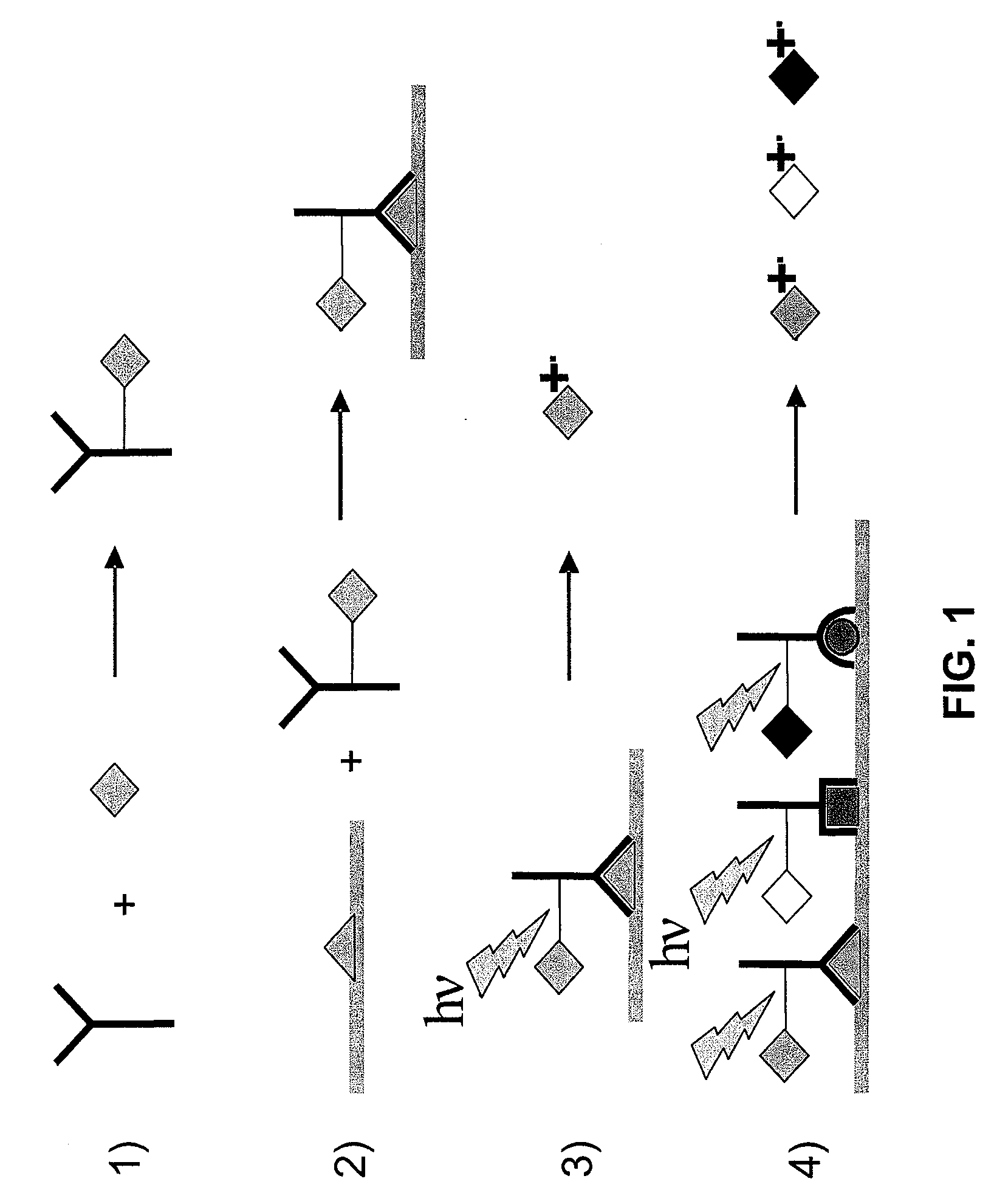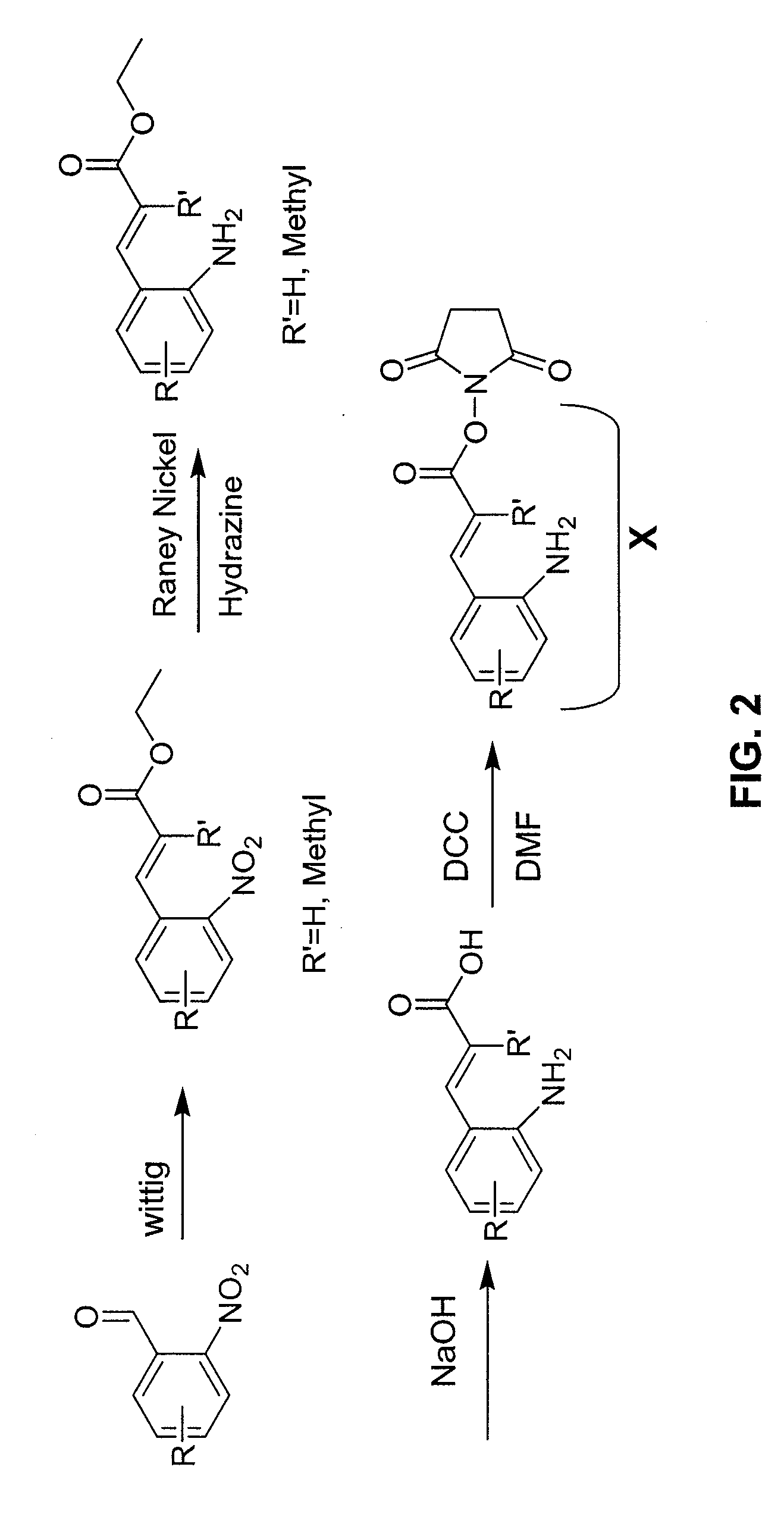Molecular detection by matrix free desorption ionization mass spectrometry
a technology of ionization mass spectrometry and matrix free desorption, which is applied in the field of molecular biology and biochemistry, can solve the problems of large number of targets that can be simultaneously detected, large number of obstacles, and inability to efficiently ionize macromolecules, and achieve the effect of increasing sensitivity
- Summary
- Abstract
- Description
- Claims
- Application Information
AI Technical Summary
Benefits of technology
Problems solved by technology
Method used
Image
Examples
example 1
Mass Tagged Antibodies
[0126]An example strategy the mass tag an antibody is presented in FIG. 2. The approach involves a Wittig coupling of appropriately substituted ortho-nitro aldehydes with stabilized Wittig reagents, providing ortho-nitro substituted cinnamate esters. Reduction of the nitro group provides ortho-amino compounds that can be hydrolyzed and converted to N-hydroxysuccinimide (NHS) esters that react with free amino groups on peptides and proteins under mild, neutral conditions. Compounds are prepared that have R′=H or methyl (Me) and with a variety of R groups substituted on the cinnamate aromatic ring.
[0127]Coupling the tags to antibodies. Tags are then coupled to antibodies using succinimide ester chemistry, as exemplified in FIG. 3. Using this chemistry, antibodies are effectively mass tagged. An example is given in FIG. 4 in which a ScFv single chain antibody is reacted with a mass tag synthesized as described above. The molecular weight (MW) of the antibody was m...
example 2
Detection of Mass Tagged Antibodies
[0129]Additional studies demonstrate that tagged IgG is detectable when used to specifically recognize an antigen bound to a surface. For this study a rabbit IgG (2 μL drop of a 1 mg / mL solution) is first immobilized on a nitrocellulose membrane as shown in FIG. 7. The membrane is then incubated with bovine serum albumin to completely bock further non-specific binding. An anti-rabbit goat polyclonal IgG previously tagged with a photocleavable tag (e.g., as described in FIG. 4) is added and the membrane is then analyzed under laser desorption conditions in a time-of-flight mass spectrometer. The localized binding of the goat anti-rabbit IgG is detected by monitoring of the mass tag signature at m / z 202. The intensity of the m / z 202 ion is plotted as a function of the x / y sample stage position and is presented in FIG. 8. A significantly stronger intensity is observed for the m / z 202 mass tag from the nitrocellulose area on which the rabbit IgG was de...
example 3
Quantitative Analysis
[0130]One highly preferred aspect of the described mass tag system is in the precise relative and absolute quantitation of the amount of antigen present or immobilized on surfaces such as tissue section. To demonstrate such quantitation, the studies from example 2 are repeated with various amounts of rabbit IgG. 2 μL of 0.2, 0.4, 0.6 and 0.8 mg / mL rabbit IgG solutions are immobilized on a nitrocellulose membrane, reacted with the tagged goat anti-rabbit IgG and mass analyzed. The m / z 202 mass tag intensities are presented in FIG. 9 showing a linear trend as a function of IgG concentration.
PUM
| Property | Measurement | Unit |
|---|---|---|
| wave length | aaaaa | aaaaa |
| wave length | aaaaa | aaaaa |
| wave length | aaaaa | aaaaa |
Abstract
Description
Claims
Application Information
 Login to View More
Login to View More - R&D
- Intellectual Property
- Life Sciences
- Materials
- Tech Scout
- Unparalleled Data Quality
- Higher Quality Content
- 60% Fewer Hallucinations
Browse by: Latest US Patents, China's latest patents, Technical Efficacy Thesaurus, Application Domain, Technology Topic, Popular Technical Reports.
© 2025 PatSnap. All rights reserved.Legal|Privacy policy|Modern Slavery Act Transparency Statement|Sitemap|About US| Contact US: help@patsnap.com



